A friend recently asked me about the naming of Croudace Road in Elermore Vale.

There is a Croudace Street in Lambton, named after Thomas Croudace, the first manager of the Lambton colliery. Thomas was also the reason for the naming of Croudace Bay, as he bought land and built a house in that locality. Presumably Croudace Road in Tingira Heights has a similar connection, being a road leading towards Croudace Bay. But what was the connection that led to the naming of Croudace Road in the Wallsend area? The answer turns out to be not Thomas, but his son Sydney.
Sydney Croudace was born in Lambton about 1874, the third son of Thomas and Christina Croudace. He was educated at The King’s School, Parramatta, and then followed his father into a coal mining career. At a comparatively early age he became manager of the Scottish Australian Mining Company’s B pit (also known as the Durham or Lambton B pit) at Redhead. In February 1913 he was appointed manager of the Newcastle-Wallsend Coal Company’s pit at Wallsend.
In August 1915, while he was manager, the Newcastle-Wallsend Coal Company registered a subdivision of a large area of their land with Deposited Plan 8479.

The subdivision, of approximately 1500 acres, covered the area between Wallsend, New Lambton and Cardiff. An area of about 50 acres was excluded from the middle of the subdivision, as this was the location of the Jubilee Shaft of the coal company. (More on this shaft later in this article.) The first land sale in DP8479 was to Henry Hancock for Lot 60 on 24 July 1916.
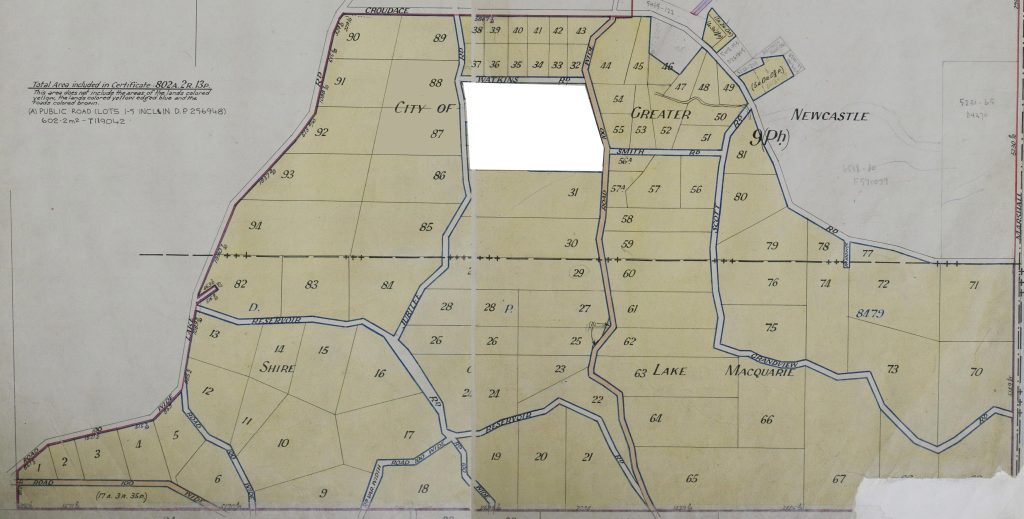
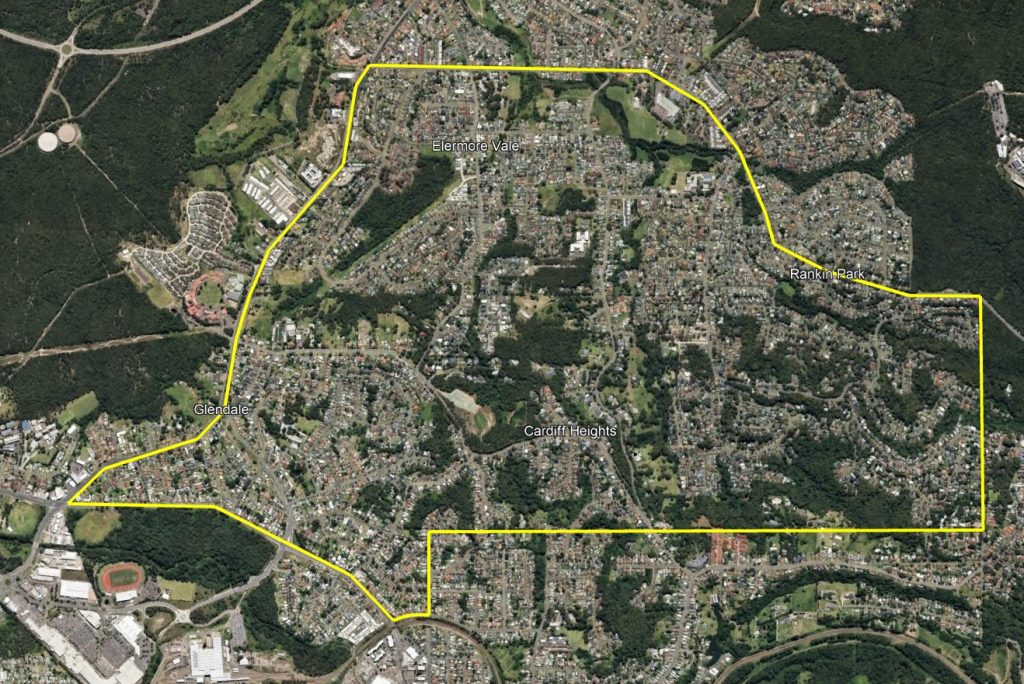
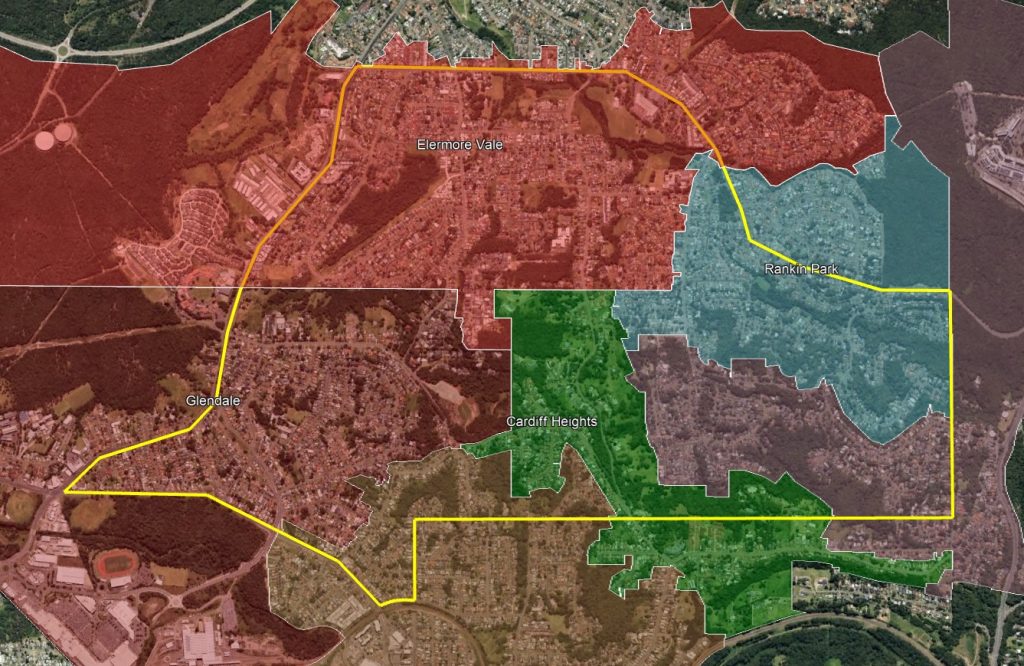
Just a few months after registering the subdivision, Sydney Croudace resigned as manager of the Newcastle-Wallsend Coal Company in December 1915 due to ill-health. The employees of the mine held a farewell dinner for Sydney Croudace, with both the office staff and the miners bestowing effusive praise upon him. By 1921 Croudace’s health had recovered sufficiently that he was able to resume the position of manager in February 1921.
By this time about 40 of the 94 lots in the subdivision had been sold. In July 1921 the residents in the northern part of the subdivision, known as Chinaman’s Flat, lobbied Wallsend Council to change the the name of their suburb, and to also set names for their as yet unlabelled streets.
Chinaman’s Flat is by no means a high-sounding title for a progressive suburb. The residents of No. 2 subdivision, which is situated on the Lake road, near Wallsend, think it should be changed to something more Australian. They have asked Wallsend Council, through the Lake-road and Cardiff Progress Association, to erase the name of Chinaman’s Flat from all official records, and that the streets be named according to a list they supplied. South Wallsend was suggested as more appropriate. Alderman England said that the name certainly acted to the detriment of the place, and visitors were not favorably impressed who might otherwise have entertained the idea of purchasing land there. The names suggested are: Jubilee-street, Cardiff-road, Scott-street, Lake-road, Croudace-road, Smith-street and Watkin-street. The council agreed to all of the requests on condition that they be called roads.
The Newcastle Sun, 29 July 1921.
- Jubilee Road would have been named after the Jubilee shaft of the Newcastle-Wallsend Coal Company. The shaft was sunk in 1887, the year of Queen Victoria’s golden jubilee. The section of the road north of Croudace Road was originally called Lundy (Lundie) Street. In December 1953, at the request of the Lake Road Progress Association, Newcastle Council renamed that section to be an extension of Jubilee Road.
- Cardiff Road is obviously named as for being the road from Wallsend to Cardiff. Although the residents requested this name, interestingly it was not formally granted at this time. As late as 1946 the road appears unnamed in land titles (e.g. Vol-Fol 5579-214.) Newspaper reports as late as December 1935 refer to the road as “Chinaman’s Flat Road”. By 1957 a Shell street map shows “Cardiff Road”, and land titles in 1959 (Vol-Fol 7753-30) now show “Cardiff Road”.
- Scott Road – the inspiration for this name is unknown. It was later renamed to Grandview Road.
- Lake Road was a name that was already used for that road further south in the Lake Macquarie Shire. The request by the residents here appears to be just an extension of that name further north into the Wallsend Council area.
- Croudace Road was almost certainly named in honour of Sydney Croudace, who was manager of the Newcastle-Wallsend Coal Company when the subdivision was created in 1915 and the streets named in 1921.
- Watkins Road is probably named after John Thomas Watkins, who purchased Lot 35 on that road in 1917.
Ministerial approval for the naming of Croudace, Smith, Watkin, Jubilee, and Scott Roads was received in December 1921.

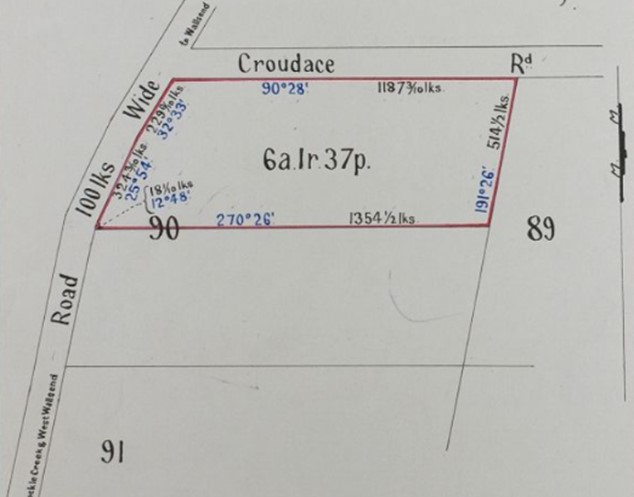
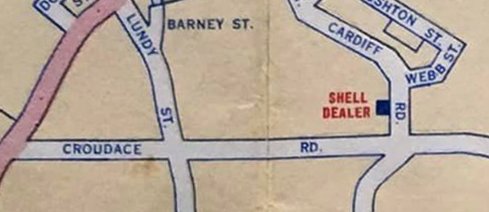
Sydney Croudace finished as manager of the Newcastle-Wallsend Coal Company in October 1928, and moved to a property in Brighton Avenue, Toronto where he lived until his death on 3 February 1935 at the age of 61. Co-incidentally, his death came just one week after shareholders of the Newcastle-Wallsend Coal Company voted to cease operations at the Wallsend Colliery that Croudace had managed for ten years.
In the ensuing years the suburb adjacent to his namesake road was variously called “South Wallsend” and “Wallsend South” in equal measure.
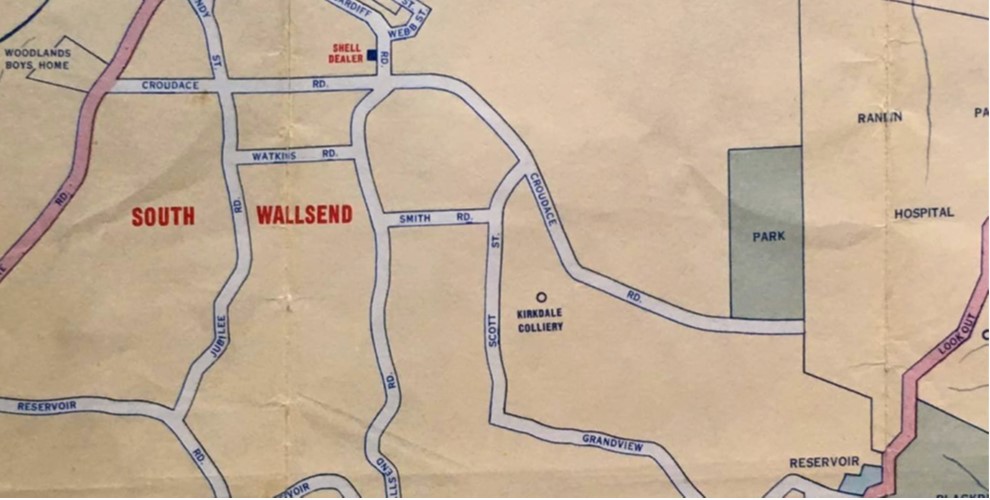
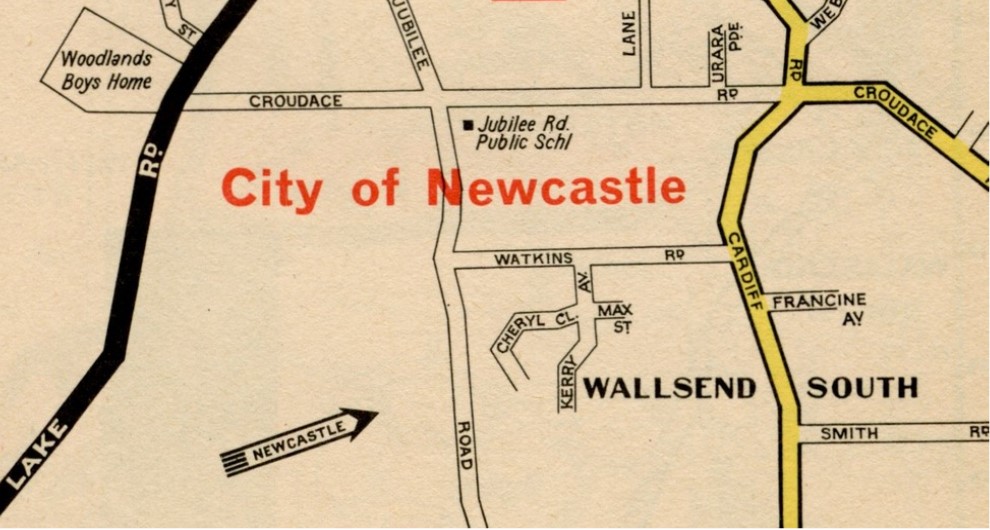
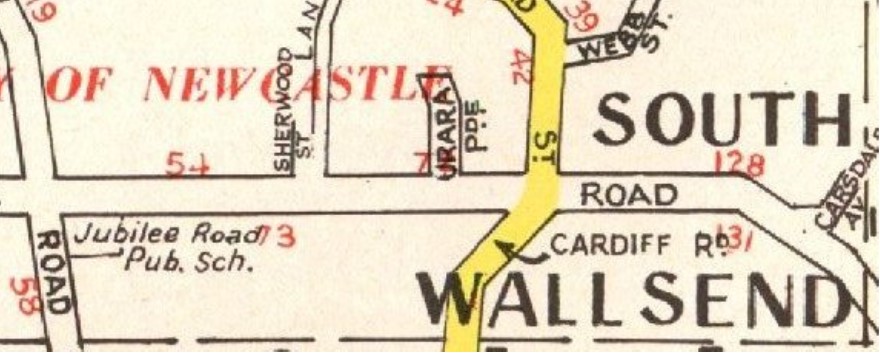
On 14 November 1975, the suburb name was officially changed to “Elermore Vale”, probably in reference to the Newcastle-Wallsend Coal Company’s “A pit” that opened in Wallsend in 1859, which was also known as the “Elermore Vale Colliery”.
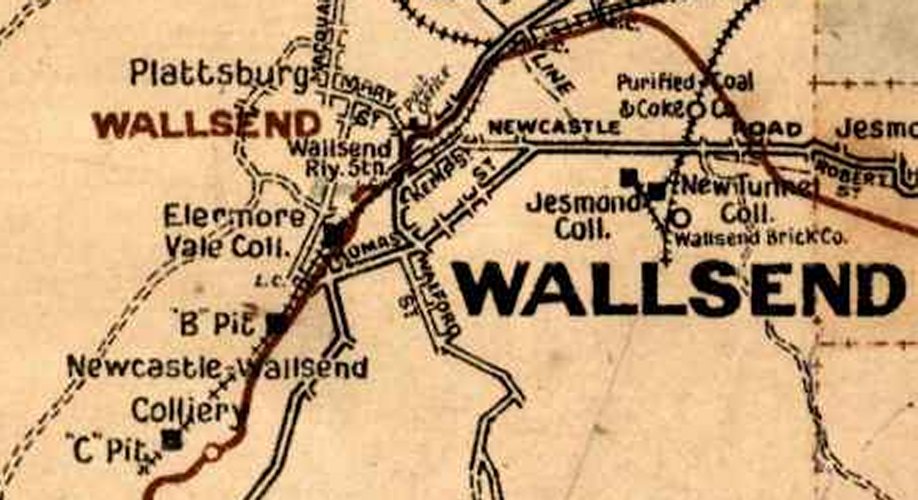
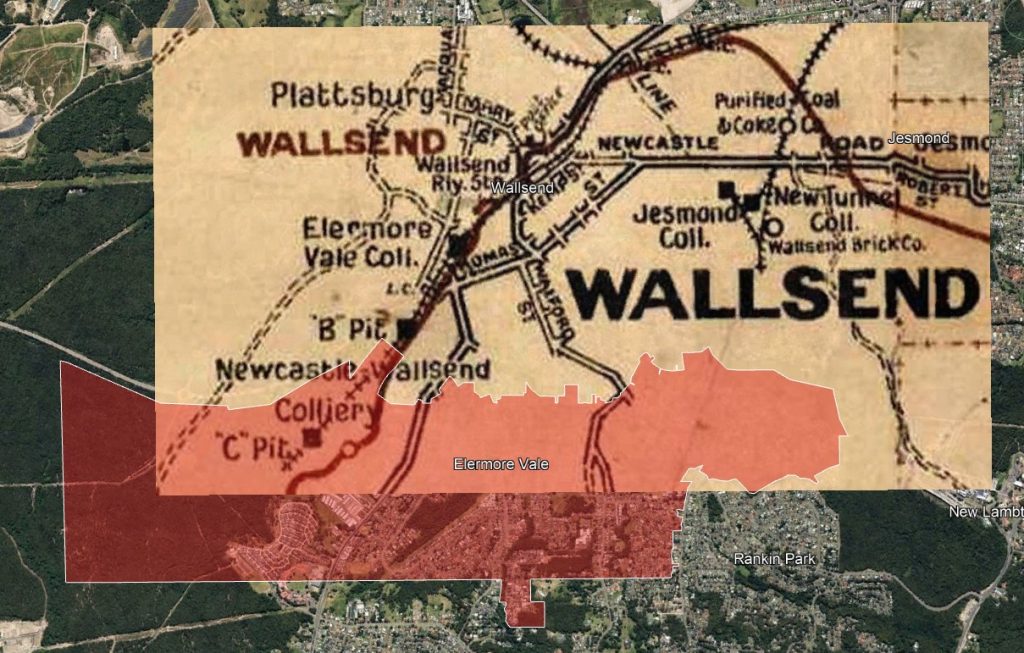
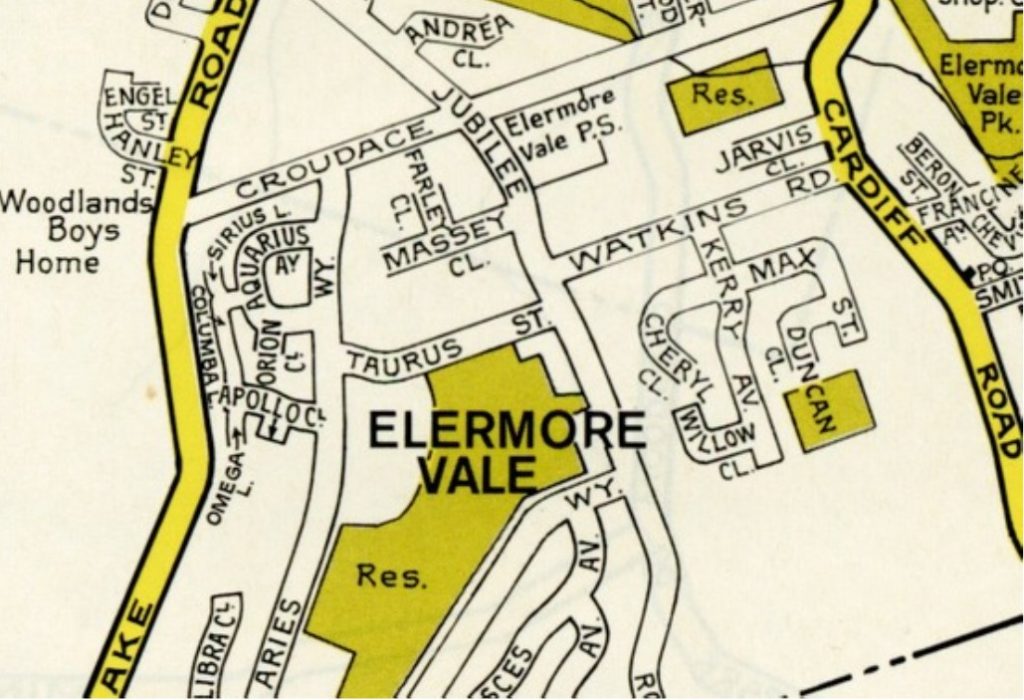
Jubilee Shaft
In 1887 in the year of Queen Victoria’s golden jubilee, the Newcastle-Wallsend Coal Company sunk a new shaft to assist with ventilation of their mine, and named it the Jubilee Shaft. It was located inside the area that was later subdivided in 1915 as DP8479, and thus was excluded from that subdivision.
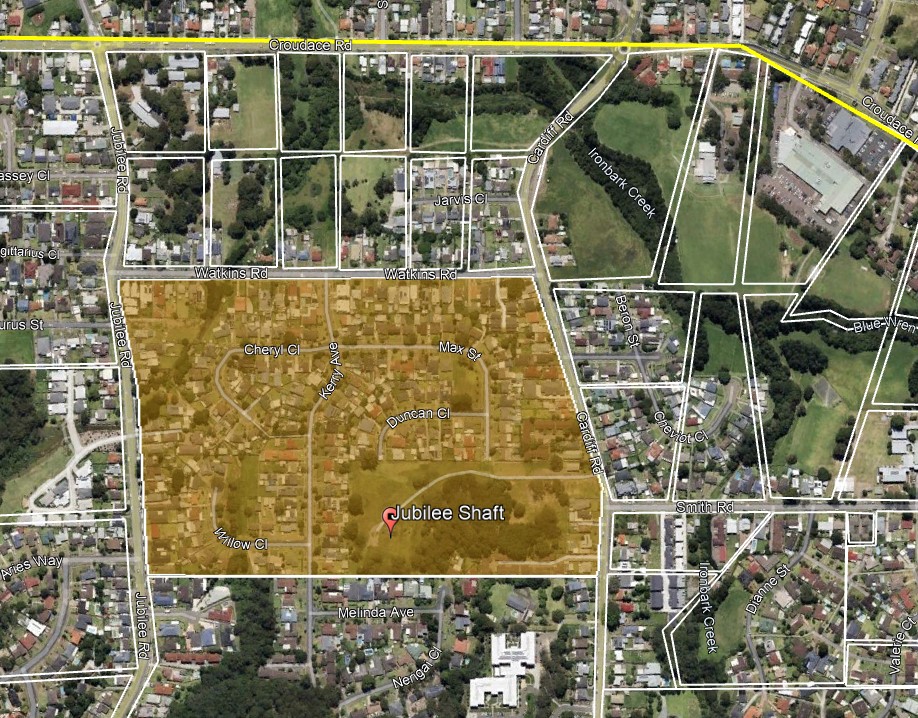
In the early 1930s the Wallsend Colliery struggled to be profitable, and in November 1934 the owners advertised the colliery for sale or lease. When no acceptable offers eventuated, the shareholders voted in January 1935 to close the mine and sell off the colliery plant, machinery, waggons and railway. Surplus equipment from the Jubilee shaft was sold at auction in May 1935. The land in the vicinity of the shaft then began to be subdivided and sold off, however a smaller parcel of land around the shaft was retained by the coal company.
After the closure in 1935, the coal seams were worked by various tribute collieries until 1968, when the Newcastle-Wallsend Coal Company resumed operations at Wallsend under the new name of “Gretley Colliery”. The name was a combination of two coal seams the company was mining – the Greta Seam in their Pelton and Ellalong mines, and the Dudley seam they were working at Wallsend. In November 1996 tragedy struck at Gretley mine when four miners were drowned by a sudden inrush of water when they inadvertently broke through to flooded abandoned workings adjacent to the Gretley workings. The error was due to the mine having been supplied with incorrect plans of the old workings by the Department of Mineral Resources. Work at Gretley was immediately suspended. In 1999 Gretley was bought by New Wallsend Coal Pty Ltd, who operated the workings as “New Wallsend No. 2 Colliery.”
A partial history of the Jubilee Shaft site can be seen in the photo below, the sign on the enclosing fence shows “Gretley Colliery” overstamped with “New Wallsend Coal Pty Ltd, New Wallsend No. 2 Colliery.” At the bottom of the sign, the words “Mine Ventilation Shaft” are just visible.


In 2021 Newcastle Council approved a development application for the construction of a 50 lot Community Title subdivision on the former Jubilee Shaft site. The development will retain some of the remnant Jubilee Shaft sandstone building walls in a community area
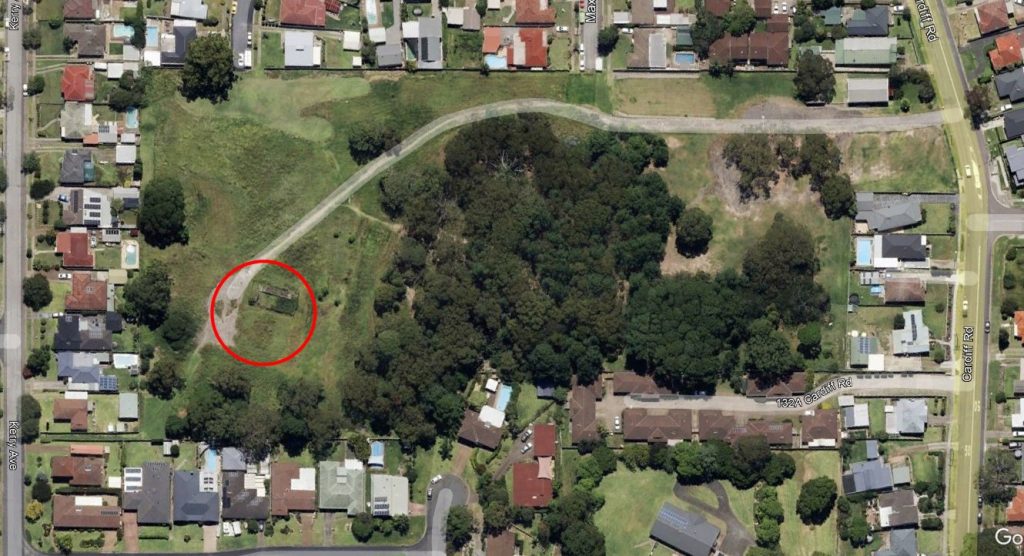

Croudace Road in Edgeworth
In the original iteration of this blog post I posed the question of why there is a Croudace Street in Edgeworth? Thanks to a note on page 138 of Ed Tonks’ 1990 book “Wallsend and Pelton Collieries. A Chronology of The Newcastle Wallsend Coal Company”, I have the answer.
That area of Edgeworth has five north-south streets, all named after prominent colliery managers of the Newcastle district when that subdivision was created in 1885.
- Thomas Street – named after James Thomas, manager of the New Lambton Colliery.
- Turnbull Street – named after William Turnbull, manager of the Australian Agricultural Company’s collieries.
- Croudace Street – named after Thomas Croudace, manager of Lambton Colliery.
- Fletcher Street – named after James Fletcher, manager of the Co-operative Colliery at Wallsend.
- Neilson Street – named after John Young Neilson, manager of the Newcastle-Wallsend Coal Company.
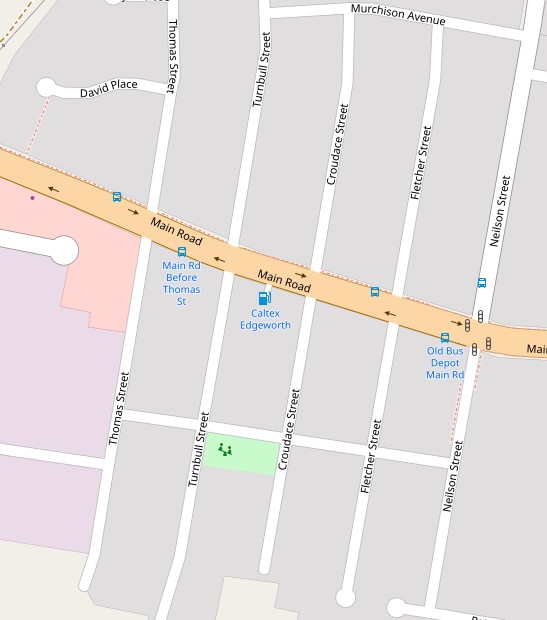
Edgeworth was originally called “Young Wallsend”, and the subdivision created by John Charles Bonarius was described by the Newcastle Morning Herald and Miners’ Advocate on 16 May 1885 …
The subdivision has been laid out by Mr. Percy Hodgkinson, of this city, whose abilities in laying a township are well known to everyone in the district, and is under the supervision of Mr. John C. Bonarius, our oldest and well-esteemed auctioneer, who will wield the hammer at the sale. The streets are plainly seen. Large posts, with the names Neilson, Fletcher, Croudace, Turnbull, Thomas, and other notables connected with the coal trade of Northumberland are seen.
Newcastle Morning Herald and Miners’ Advocate, 16 May 1885.
A real estate poster advertising the sale of the subdivision was produced, but with Neilson and Johnson spelled incorrectly.
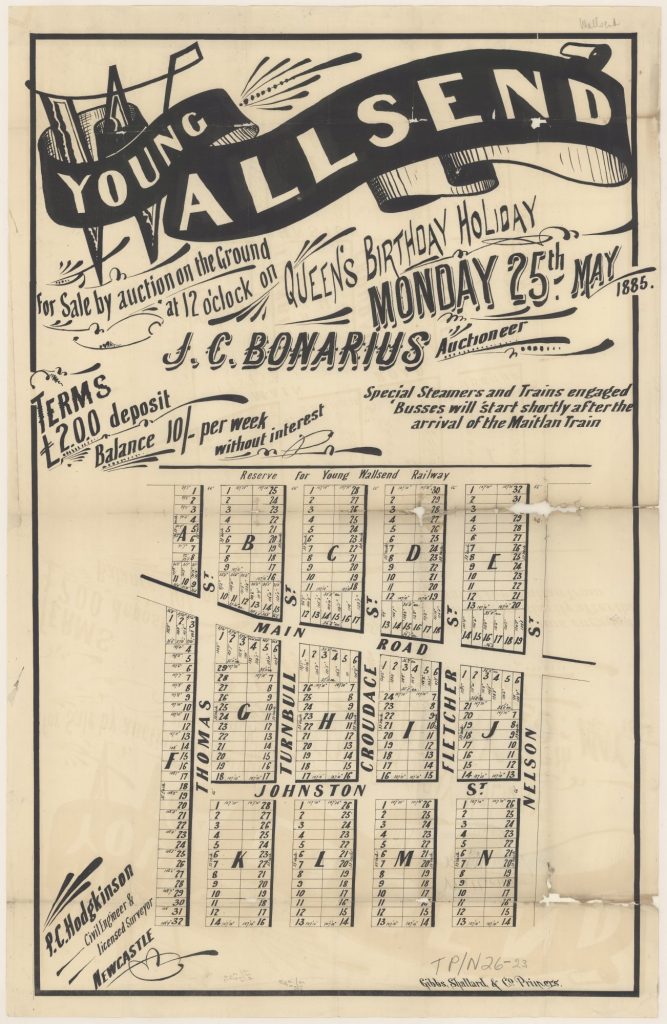
The naming of Johnson St is uncertain. It possibly refers to R Johnson who was the manager of the Glebe colliery.
Unanswered questions
- When exactly did Cardiff Road get its official name?
Newspaper articles
| Article Date Event Date | Notes |
|---|---|
| 7 Feb 1913 | Sydney Croudace appointed manager of the Newcastle-Wallsend Coal Company's Wallsend Colliery. |
| 6 Dec 1915 4 Dec 1915 | Retirement due to ill-health of Sydney Croudace as manager of Wallsend colliery. "There was a large attendance at the Masonic Hall, Wallsend, on Saturday evening, when Mr. S. Croudace, who for the last three years has occupied the position of manager of the Wallsend Colliery, was entertained by the employees of the colliery, and presented with marks of their esteem and appreciation." |
| 2 Feb 1921 | "Mr. S. Croudace will succeed Mr. N. J. Clark as colliery manager of the Newcastle-Wallsend Coal Company." (Croudace returns to the position he previously resigned from due to ill-health.) |
| 29 Jul 1921 | Residents of "Chinaman's Flat" request that their suburb be renamed to "South Wallsend", and suggest names for a number of their roads. |
| 17 Dec 1921 | "Ministerial approval having now been received, it is notified for public information that the un-named roads in the South Wallsend subdivision, otherwise known as Chinaman Flat Subdivision, will be designated as follows: Croudace-road, Smith-road, Watkin-road, Jubilee-road, Scott-road." |
| 13 Oct 1928 10 Oct 1928 | "Mr. Sydney Croudace on Wednesday terminated his second period of service with Newcastle-Wallsend Coal Company as manager of Wallsend colliery." |
| 23 Nov 1934 | Advertisement for sale or lease of Wallsend Colliery. |
| 25 Jan 1935 24 Jan 1935 | "At the annual general meeting of shareholders of the Newcastle-Wallsend Coal Company held yesterday it was decided to cease operations at the company's Wallsend colliery owing to heavy losses incurred during the past six years and the uncertainty of the future." |
| 4 Feb 1935 3 Feb 1935 | Death of Sydney Croudace, in Toronto, aged 61. |
| 16 Feb 1935 | "Hopes of a reopening of Wallsend Colliery, commonly known as Wallsend C Pit, have been shattered … dismantling and removal to the surface of the underground appliances and plant of the colliery. … The mine is to be abandoned." |
| 18 Feb 1935 | "Wallsend citizens who have been hoping for an 11th-hour sale of the colliery property, or for a lease which would allow a resumption of operations, are beginning to despair as they realise the latest definite steps Newcastle-Wallsend Coal Company has adopted to seal the doom of Wallsend C pit. For three-quarters of a century the coal company has been operating at one or another of the branches of its Wallsend mine. Wallsend without a Wallsend colliery is to many people almost unthinkable." |
| 2 May 1935 | Sale of equipment from the closed Jubilee Shaft in Wallsend. |
| 16 Dec 1953 | "Newcastle Council Works Committee recommended last night that the council alter the name of Lundy-street, Wallsend, between Lake-road and Croudace-street, to Jubilee-road. The City Engineer (Mr. Baddeley) said a month had passed since the council proposed to alter the name. It had been publicised and no objection had been received." |
| 14 Nov 1975 | The suburb name "Elermore Vale" is officially gazetted. |
